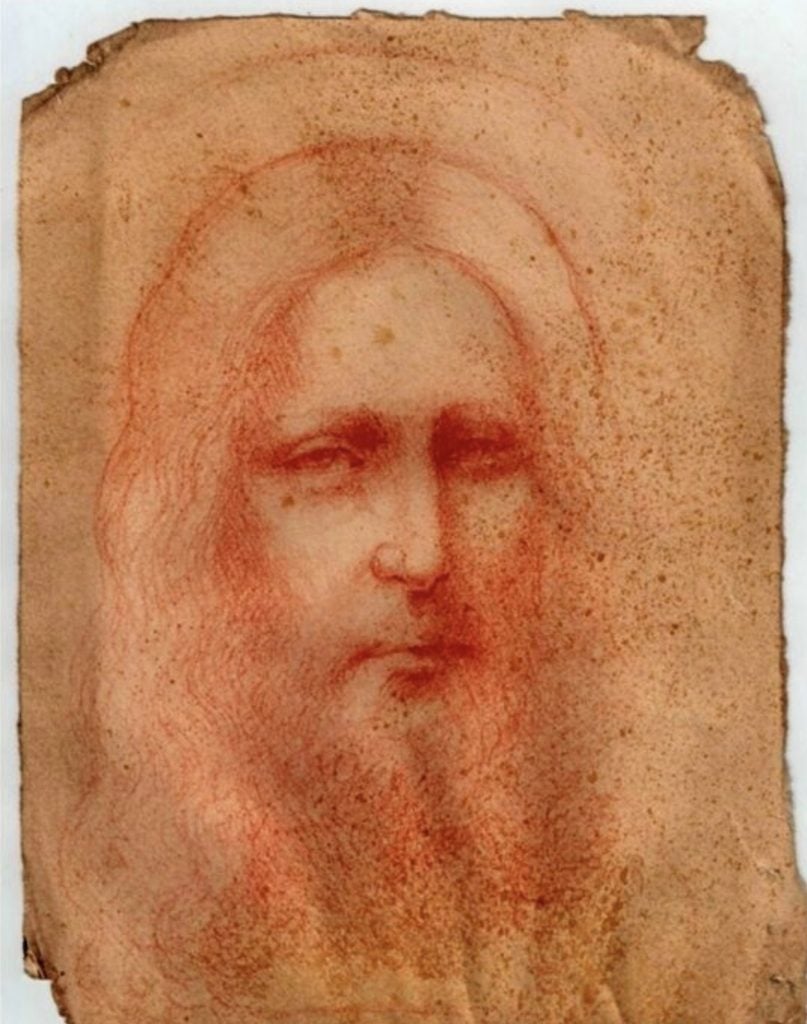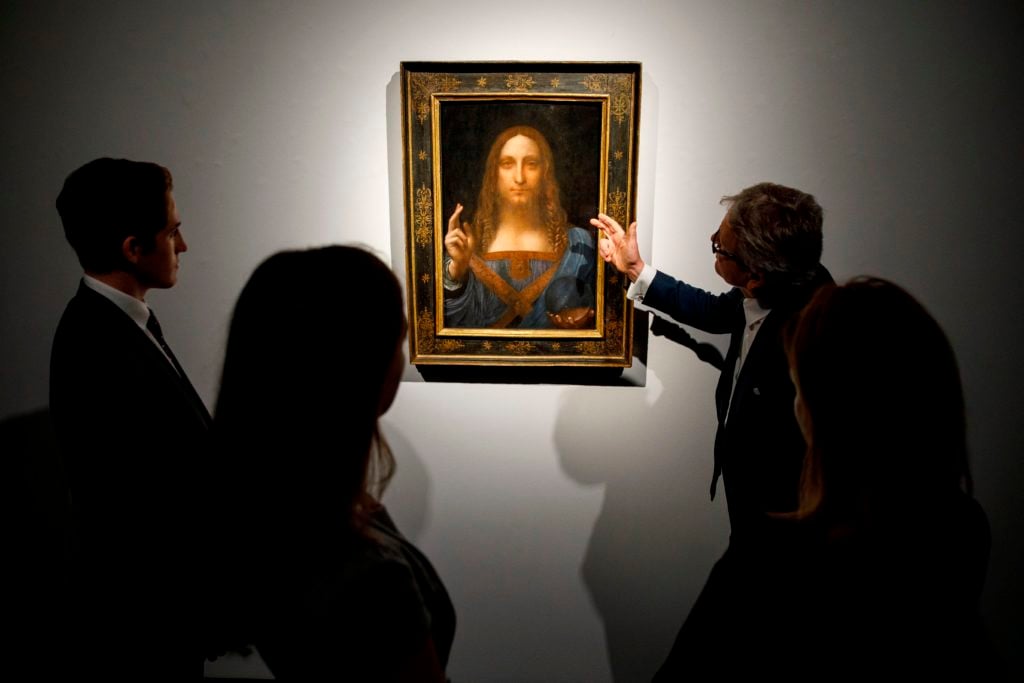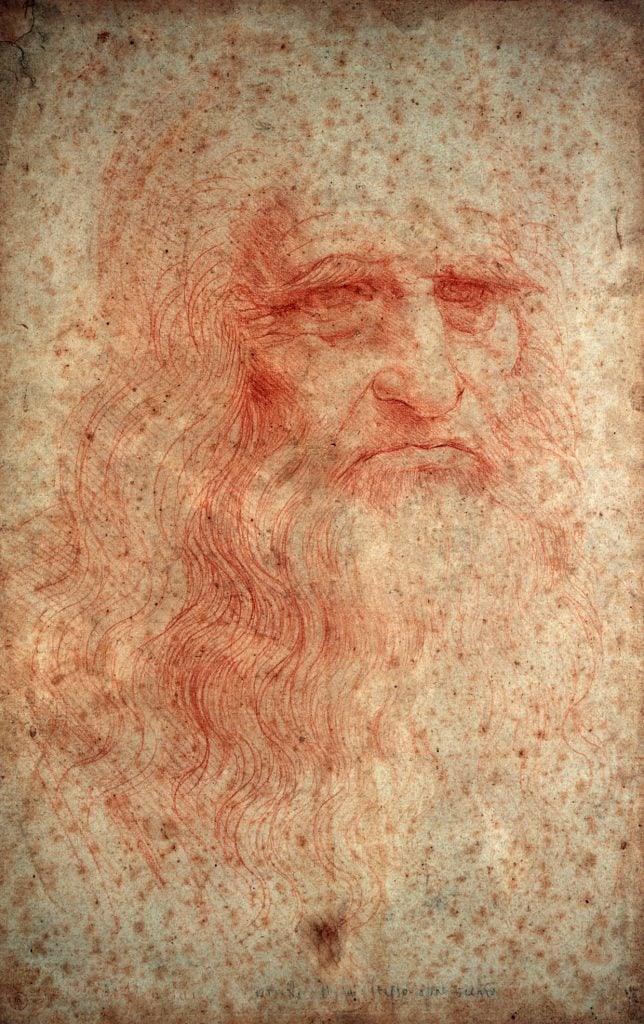Art World
In an Explosive Claim, a Scholar Says This Newly Discovered Drawing Proves Leonardo da Vinci Never Painted ‘Salvator Mundi’
The Italian art historian claims the drawing is a study for Leonardo's actual, lost "Salvator Mundi."

The Italian art historian claims the drawing is a study for Leonardo's actual, lost "Salvator Mundi."

Sarah Cascone

An Italian scholar claims to have discovered a new drawing of Jesus Christ by Leonardo da Vinci that confirms doubts that the Renaissance master painted Salvator Mundi, the world’s most expensive work of art.
A private collector in Lecco showed the red chalk drawing of Jesus Christ to Annalisa Di Maria, a Leonardo scholar associated with the UNESCO Center in Florence, and she immediately saw in it the hand of Leonardo.
“[This] is the true face of Salavator Mundi,” Di Maria told La Stampa. “[It] recalls everything in the drawings of Leonardo: it is his language, and speaks loud and clear.” Looking at the work for the first time was, she added, was “breathtaking.”
Di Maria compares the drawing to Leonardo’s best-known self-portrait, noting that both were done in the three-quarters view that the artist favored.

Christie’s employees pose in front of Leonardo da Vinci’s Salvator Mundi ahead of its sale at Christie’s New York on November 15, 2017. Photo: Tolga Akmena/AFP/Getty Images.
Salavator Mundi, on the other hand, shows Jesus head on, staring directly at the viewer. Lost for centuries, the painting was attributed for years to the artist Boltraffio, who worked in Leonardo’s studio.
But after New York art dealer Alex Parrish bought the painting for $10,000 in 2005, experts converged upon a new consensus: that it was by Leonardo. In 2011, the new attribution was announced and the painting was unveiled to the public at the National Gallery’s sprawling Leonardo retrospective in London.
But even as the painting came to market at Christie’s New York in 2017, some questioned the authorship of the heavily restored panel. Defying critics, it sold for $450 million, allegedly to Saudi crown prince Mohammad bin Salman. (It has not been seen since, and was notably absent from the Louvre’s recent blockbuster on the artist, despite ostensibly having been purchased for the museum’s Abu Dhabi outpost.)
Now, Di Maria claims that the newly discovered Leonardo drawing proves that the Salvator Mundi is not the artist’s work, because the drawing of Jesus is a study for the actual Leonardo work of that title, which has a totally different, more dynamic composition.

Leonardo da Vinci, Self-Portrait (1512-1515). Photo by DeAgostini/Getty Images.
“I am not the only one who has always said that… [Salvator Mundi] was not actually by Leonardo,” Di Maria said. “[Leonardo] could never have portrayed such a frontal and motionless character.”
The drawing, whose discovery was first announced by the Leonardo da Vinci International Committee, was originally to have been unveiled at a conference in Florence. Di Maria plans to present her 80-page paper on the work once Italy lifts lockdown restrictions.
According to Di Maria, scientific testing dates the paper to the early 16th century, and the figure’s beard and eyes closely match Leonardo’s style. But despite her certainty, a final verdict on the drawing’s authenticity—and what that means for Salvator Mundi—is still pending.
“I wouldn’t dismiss it out of hand, but I simply can’t tell without seeing the drawing and the scientific evidence,” Leonardo expert Martin Kemp told the Telegraph. “I would need to see if it is drawn left-handed. Leonardo drew everything with his left hand.”